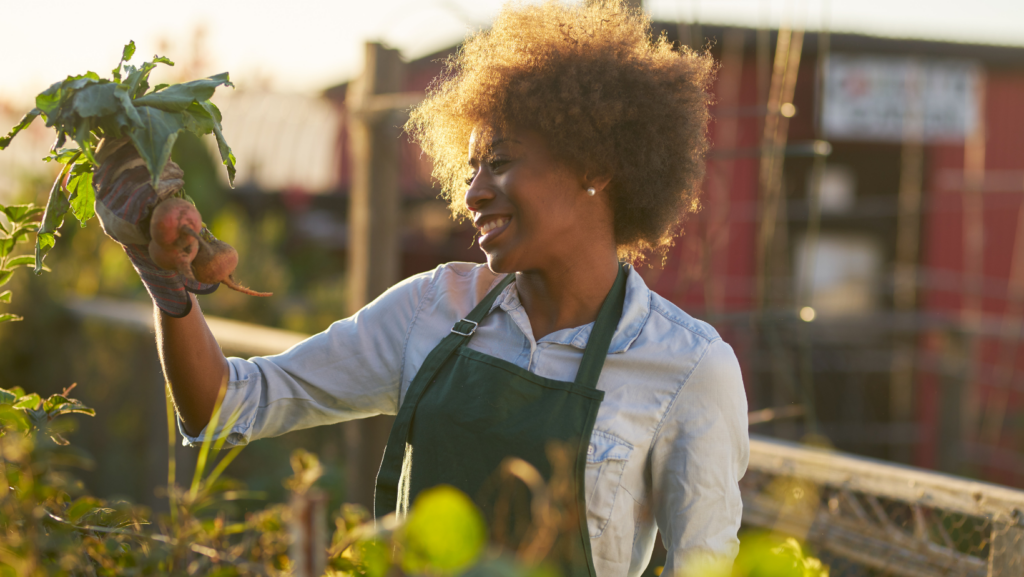Urban gardening, a vibrant answer to city living’s spatial constraints, transforms rooftops, balconies, and even windowsills into lush, green oases. As urban populations swell, the quest for green spaces in concrete jungles becomes more pressing. This form of gardening not only beautifies urban areas but also plays a crucial role in enhancing urban food security and sustainability.
What Is Urban Gardening
 Urban gardening transforms limited city spaces into vibrant areas of growth. Through the judicious use of balconies, rooftops, and even window ledges, urban residents find innovative ways to grow a variety of plants, from herbs to vegetables. This practice not only enhances the aesthetic appeal of urban environments but also contributes substantially to local food supplies. By employing containers, vertical gardens, and raised beds, urban gardeners optimize space effectively, illustrating space efficiency in gardening practices. Moreover, urban gardening involves selecting appropriate plant varieties that flourish in urban settings, understanding the importance of soil quality and composition, and managing limited water resources optimally. These strategies ensure successful plant growth and sustainability in urban gardening efforts, reflecting a comprehensive approach to overcoming the typical challenges faced in restricted urban landscapes.
Urban gardening transforms limited city spaces into vibrant areas of growth. Through the judicious use of balconies, rooftops, and even window ledges, urban residents find innovative ways to grow a variety of plants, from herbs to vegetables. This practice not only enhances the aesthetic appeal of urban environments but also contributes substantially to local food supplies. By employing containers, vertical gardens, and raised beds, urban gardeners optimize space effectively, illustrating space efficiency in gardening practices. Moreover, urban gardening involves selecting appropriate plant varieties that flourish in urban settings, understanding the importance of soil quality and composition, and managing limited water resources optimally. These strategies ensure successful plant growth and sustainability in urban gardening efforts, reflecting a comprehensive approach to overcoming the typical challenges faced in restricted urban landscapes.
The Benefits of Integrating Nature into Urban Spaces
Integrating nature into urban spaces through urban gardening enriches city living in multiple ways. First, it increases biodiversity by providing habitats for various urban wildlife, such as birds and insects. Second, urban vegetation improves air quality as plants absorb pollutants and produce oxygen, offering city dwellers cleaner air to breathe.
Moreover, urban green spaces help mitigate the heat island effect common in densely built environments. Vegetation and green surfaces lower ambient temperatures through the processes of shading and evapotranspiration. This natural cooling reduces the dependence on air conditioning, decreasing energy consumption and associated costs.
Additionally, urban gardening fosters community interaction by creating shared spaces where residents engage in gardening activities. These communal efforts not only strengthen social bonds but also promote physical activity and mental health benefits.
Key Components of Urban Gardens
 Urban gardening thrives with specific elements tailored to city environments. These key components ensure the gardens’ success and sustainability:
Urban gardening thrives with specific elements tailored to city environments. These key components ensure the gardens’ success and sustainability:
- Compact Design: Space efficiency is vital, integrating multi-level strategies such as vertical gardening or tiered planters. This approach maximizes the limited areas available on balconies, rooftops, and similar urban spaces.
- Container Planting: Suitable containers, including pots, modified buckets, and even recycled materials, offer flexibility for relocating plants as needed to optimize sun exposure and space utilization.
- Soil Quality and Composition: Using high-quality potting soil enriched with compost helps manage nutrient levels crucial for plant health. This soil must drain well yet retain moisture to sustain plant life.
- Water Efficiency Systems: Drip irrigation or self-watering containers are essential, ensuring plants receive the right water amount without waste, a critical factor in urban settings where water might be scarce.
- Appropriate Plant Selection: Choosing plants that flourish in urban conditions, considering factors like sunlight availability and air quality, increases garden viability and yield.
Incorporating these components not only enhances urban gardens’ productivity but also contributes to environmental health and aesthetic improvement in densely populated areas.
Challenges and Solutions in Urban Gardening
Urban gardening presents unique challenges, influenced heavily by the constraints of space and resource availability. Addressing these, however, leads to innovative and effective solutions that promote garden success and sustainability.
Limited Space
 Optimizing space stands as a primary challenge for urban gardeners. Creative solutions include vertical gardening, utilizing balconies, rooftops, and even wall space. For instance, vertical gardening allows the cultivation of plants on trellises, wall planters, and hanging baskets, maximizing the use of vertical space.
Optimizing space stands as a primary challenge for urban gardeners. Creative solutions include vertical gardening, utilizing balconies, rooftops, and even wall space. For instance, vertical gardening allows the cultivation of plants on trellises, wall planters, and hanging baskets, maximizing the use of vertical space.
Urban soils often suffer from poor fertility and contamination. Gardeners overcome this by using high-quality, contaminant-free potting mixes and diligently adding organic matter. Composting is an excellent method for enhancing soil structure, fertility, and microbial life, contributing to more robust plant growth.
Water Accessibility
Given the erratic availability of water in urban settings, efficient water management systems become crucial. Drip irrigation and self-watering containers ensure water goes directly to the plant roots with minimal waste. Collecting rainwater is another sustainable practice, reducing dependency on municipal water systems and promoting environmental sustainability.

